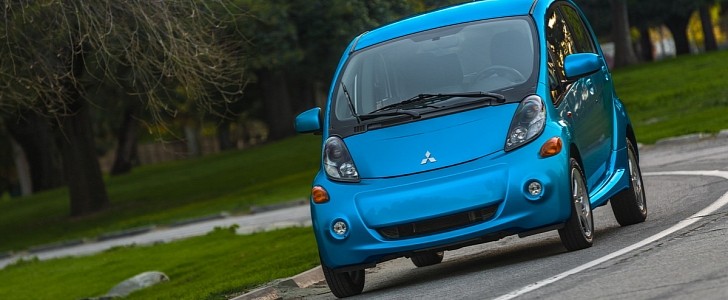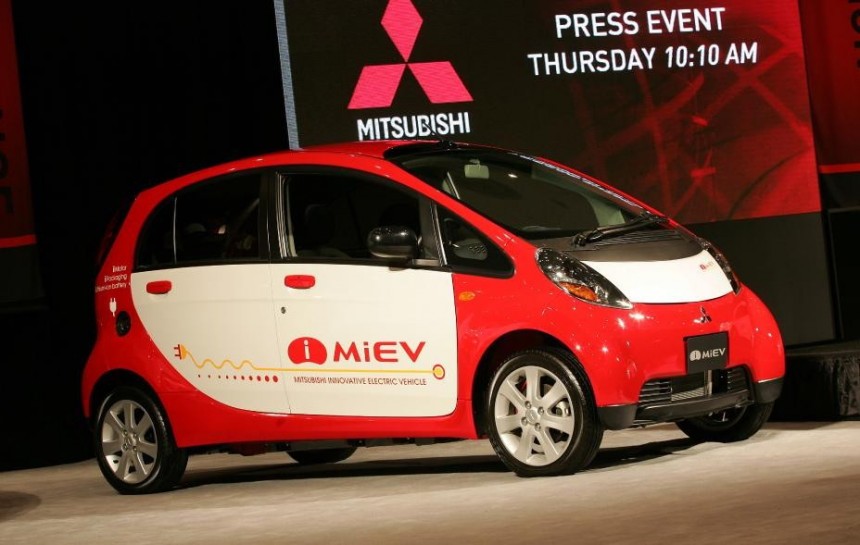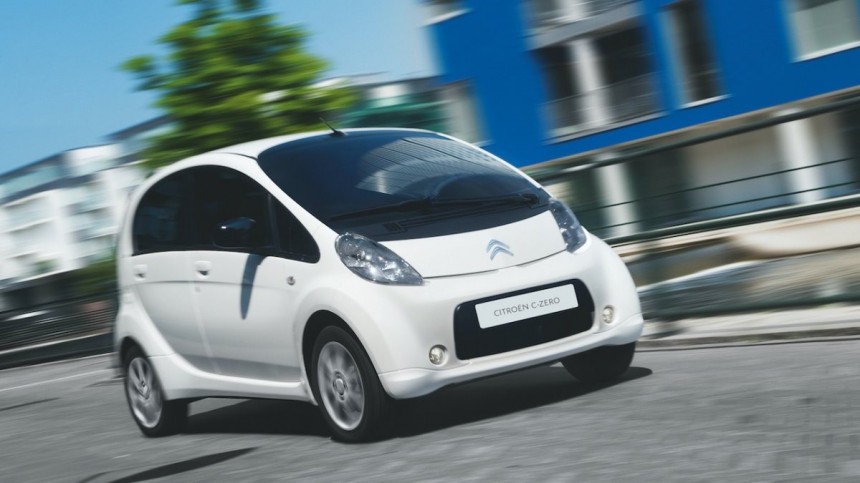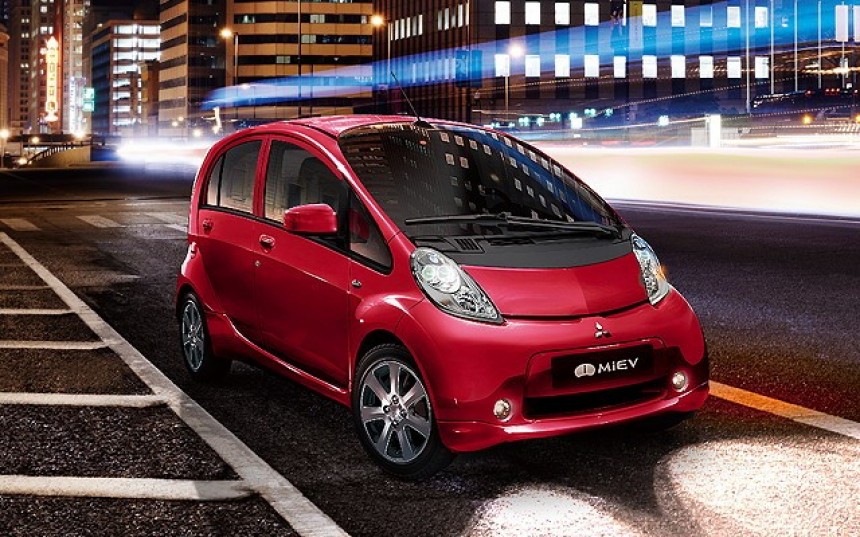Let's be honest. Back when the Mitsubishi i-MiEV first hit the scene back in the late 2000s, reactions were mixed, so to say. If the i-MiEV truly was the pinnacle of EV technology of the day, then there must not have been much promise in the EV field in general.
But rarely is life this black and white. Sometimes, when a car looks a bit pathetic, it's actually the beginning of a burgeoning industry ready to take the world by storm as soon as all the kinks are worked out. There's a strong case that this is the case with the i-MiEV. It was a car that people laughed at in its time. But now, looks like the beginning of a new era for the industry.
Before the i-MiEV, electric cars were little more than punching bags for loudmouth auto journalists who thought quips about EVs being pathetic were funny. Admittedly, some of them were pretty funny. Does anyone remember the G-Wiz?
If not for Top Gear and Jeremy Clarkson, we probably wouldn't have remembered it either. The point is electric cars used to be little plastic buckets on wheels that were painfully slow, unrefined, and depleted their batteries after what must have felt like only a few feet.
This notion started to change not with the original Tesla Roadster but with the Mitsubishi i-MiEV. First launched to Japanese fleet customers in July 2009, the i-MiEV was undoubtedly a giant evolution for EVs in general. Yes, it was not a looker, and yes, it was pretty gosh darn slow. But you could at least merge onto any given highway in an i-MiEV. You couldn't say the same about the G-Wiz.
In fact, the i-MiEV was the very first mass-produced electric car capable of more than just in-town running about. It was also one of the first EVs to be manufactured at genuine mass-production levels. It was the first EV to sell more than 10,000 units, doing so and verified by the Guinness Book of World Records in 2011. The i-Miev was sold in Europe as the Peugeot iOn and Citroën C-Zero.
Performance figures for the Mitsubishi i-MiEV weren't exactly anything to write home about. Its 63 horsepower permanent-magnet electric motor and 16 kWh / 58 MJ lithium-ion battery were only good for a top speed of 80 miles per hour. So even if the i-MiEV could, in theory, merge onto a highway, chances were good you'd be hogging the right lane at 60 miles per hour the entire time.
But even with all these shortcomings, there was much interesting new and exciting technology present on the i-MiEV that the EV industry of ten years later took for granted. Things like regenerative braking, multiple different types of charging capability, and the ability to power a family home in the case of an emergency.
In the aftermath of the 2011 Tohoku earthquake and tsunami, Mitsubishi fast-tracked the release of the MiEV Power Box. A device that enabled i-MiEVs to connect to a family home's electrical grid to provide power to home electric appliances in the event of a power outage. When it comes to modern EVs made ten years later, this is a feature that many EVs utilize. Not only was the i-MiEV very advanced in technology for its time, but it was also one of the safest EVs of the day.
The i-MiEV and its European counterparts from Peugeot and Citroen all scored four out of five stars in Europ NCAP safety tests. These assessments were confirmed by the American NHTSA, which also gave the i-MiEV a score of four out of five. Anyone who was used to Top Gear destroying G-Wizzes and thinking they'd never be caught dead in an EV, as a result, must have had their world views shattered with this information.
A total of nearly 30,000 i-MiEVs have been sold since the late 2000s. A number that stood as the world record for sales of EVs until modern juggernauts of the EV industry like Tesla began to sell cars in numbers traditional automakers were jealous of. Admittedly, the time has not been kind to the i-MiEV. Newer, more advanced EVs sure have made it look like quite the dinosaur. Especially with its "unique" styling.
But as we all know, you have to walk before you run and even learn to crawl before any of that. If the i-MiEV was the equivalent of a newborn baby learning to crawl around its crib, consider the Tesla Model S Plaid that same newborn all grown up and turned into an Olympic Sprinter, the likes of which would make Usain Bolt seeth with jealousy.
It may not have lit the world on fire, but the i-MiEV at least set the stage for EVs that could. It must be the main reason i-MiEVs are still being produced and sold new today in some places.
Check back for more from EV month right here on autoevolution.
Before the i-MiEV, electric cars were little more than punching bags for loudmouth auto journalists who thought quips about EVs being pathetic were funny. Admittedly, some of them were pretty funny. Does anyone remember the G-Wiz?
If not for Top Gear and Jeremy Clarkson, we probably wouldn't have remembered it either. The point is electric cars used to be little plastic buckets on wheels that were painfully slow, unrefined, and depleted their batteries after what must have felt like only a few feet.
This notion started to change not with the original Tesla Roadster but with the Mitsubishi i-MiEV. First launched to Japanese fleet customers in July 2009, the i-MiEV was undoubtedly a giant evolution for EVs in general. Yes, it was not a looker, and yes, it was pretty gosh darn slow. But you could at least merge onto any given highway in an i-MiEV. You couldn't say the same about the G-Wiz.
Performance figures for the Mitsubishi i-MiEV weren't exactly anything to write home about. Its 63 horsepower permanent-magnet electric motor and 16 kWh / 58 MJ lithium-ion battery were only good for a top speed of 80 miles per hour. So even if the i-MiEV could, in theory, merge onto a highway, chances were good you'd be hogging the right lane at 60 miles per hour the entire time.
But even with all these shortcomings, there was much interesting new and exciting technology present on the i-MiEV that the EV industry of ten years later took for granted. Things like regenerative braking, multiple different types of charging capability, and the ability to power a family home in the case of an emergency.
In the aftermath of the 2011 Tohoku earthquake and tsunami, Mitsubishi fast-tracked the release of the MiEV Power Box. A device that enabled i-MiEVs to connect to a family home's electrical grid to provide power to home electric appliances in the event of a power outage. When it comes to modern EVs made ten years later, this is a feature that many EVs utilize. Not only was the i-MiEV very advanced in technology for its time, but it was also one of the safest EVs of the day.
A total of nearly 30,000 i-MiEVs have been sold since the late 2000s. A number that stood as the world record for sales of EVs until modern juggernauts of the EV industry like Tesla began to sell cars in numbers traditional automakers were jealous of. Admittedly, the time has not been kind to the i-MiEV. Newer, more advanced EVs sure have made it look like quite the dinosaur. Especially with its "unique" styling.
But as we all know, you have to walk before you run and even learn to crawl before any of that. If the i-MiEV was the equivalent of a newborn baby learning to crawl around its crib, consider the Tesla Model S Plaid that same newborn all grown up and turned into an Olympic Sprinter, the likes of which would make Usain Bolt seeth with jealousy.
It may not have lit the world on fire, but the i-MiEV at least set the stage for EVs that could. It must be the main reason i-MiEVs are still being produced and sold new today in some places.









